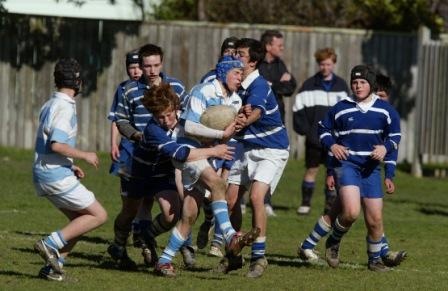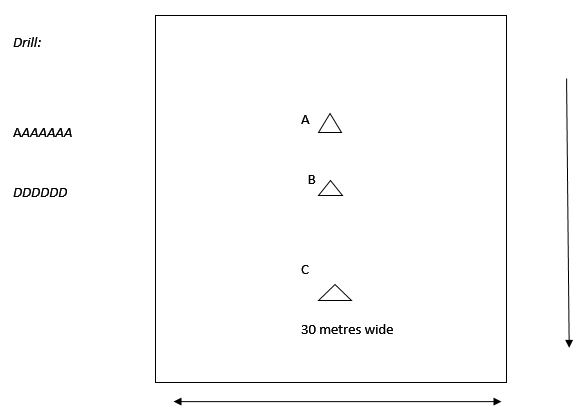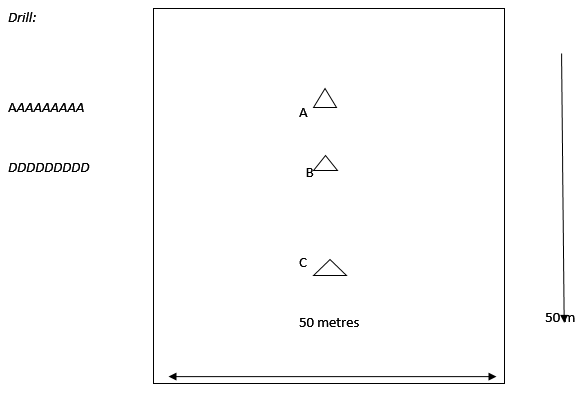- Rugby Toolbox
- Resources & Education
- Learn more
- Articles
- Snook on Coaching
- Under 11/13 – Decision Making
- Ruck & Run Drill
- Playing Philosophy – Ruck & Run Coaching Components
- Playing Philosophy – Spread the Forwards
- Playing Philosophy – A forward behind the ruck
- Playing Philosophy – Ruck & Run
- Playing Philosophy – An idea!
- The Breakdown
- Building Positivity [3]
- Building Positivity [2]
- Building Positivity
- Fitness and Game Related Activities
- Getting the Head Working
- Missiles are Dangerous
- Use of Video
- Winger Attacking Outside First-Five
- Player Profiling
- Selection
- Fitness Away from the Team Session
- Playing Philosophy (Pre season Prep)
- Coaching the Coaches
- The Rugby Coordinator and Pre-Season Preparation
- Why Not Use Tap Penalties More Often?
- Why Kick the Ball Down the Middle of the Field?
- Defending the 5 Metre Lineout Drive
- Scoring from the 5 Metre Lineout
- What are the Kicking Team Aiming to Achieve from Halfway Restart
- Should We Practice Scoring Tries?
- Team Culture
- Looking After Your Players
- Coach Survival Tips
- Under 11/13 – Backline Defence
- Under 11/13 – Ruck Defence
- Under 11/13 – Back Attack
- Under 13 – The Counter Attack
- Under 11/13 – The Maul
- Under 11/13 – Lineouts
- Under 11/13 – Decision Making
- Under 11/13 – Support Play
- Under 11/13 – Dive Pass and More
- Under 11/13 – Drop & Grubber Kick /Highball Catch
- Under 11/13 – Front on Tackling
- Under 11/13 – Contact – Getting Up – The Ruck
- Under 11/13 – The Coaching Session
- Under 8/10 – Using Space
- Under 8/10 – Kicking
- Under 8/10 – Contact and Picking Up the Ball
- U8/U10 Draw & Pass and Sidestep
- Under 8/10 – The Tackle
- Under 8/10 – The Coaching Session
- Under 7 – Test Your Coaching – Support Play
- Tap Pass and Swerve U7
- Ball Familiarisation; Passing & Receiving
- Activities for the Non-Contact Tackle
- Under 7 – The Coaching Session
- Coaching Teenagers – After the Ruck
- Coaching Teenagers – The Practice Session
- Coaching Teenagers – Best Practice
- Coaching Kids – Best Practice
- Plays from a Tap Penalty
- Running Plays from a 5 Man Lineout
- Driving Plays from a 5 Man Lineout
- Strike Plays at the End of the Lineout
- Back Strike Plays at the Lineout
- Wide Strike at the Scrum (2)
- Wide Strike at the Scrum
- Midfield Attack at the Scrum
- No 8 Plays at the Scrum (2)
- No 8 Plays at the Scrum
- The Cut Out Pass
- Skills to Penetrate (2)
- Skills to Penetrate
- Movements to Penetrate
- Patterns to Penetrate
- Contact and Continuity
- Keeping the Ball Alive Out Wide
- Pre Season Support Activities
- Checklist
- Understanding the game
- The Playing Philosophy
- The Lineout
- Overview
- Team Profile
- Start Now!
- Backrow
- Nine and Ten
- Rugby-related Fitness Activities
- The Psychological Edge
- Open Field Play
- Key Performance Indicators
- Improving Team Performance
- Backline Attack Concepts
- Tactics at Phase Play
- Playing Philosophy
- The ‘Stop Focus’
- Kick Attack
- Clearing the 22
- Wide Attack at Phase
- Player Focus
- Scrum Preparation
- Lineout Preparation
- Back Attack Preparation
- Sevens Preparation
- Sevens Kick Offs
- Sevens Scrum and Lineout
- Sevens Attack Patterns
- Sevens Defence
- 7's Selection and Game Planning
- Coaching and Leadership
- How the Game Evolves
- Changing Within the Game
- Learning from the Television.
- Using Tap Penalties Wisely
- Defence Drills
- Defence Drills for Tight Five
- Team Defence and TUB’ing
- Establishing Patterns from the Ruck
- Structured Phase Play
- Structuring Phase Play on the Run
- Coaching Roles
- Structuring a Close in Tackling/Defensive Session
- Coaching in Threes
- Attacking Back Play
- Kick Off Chase
- Wrap Around Back Plays
- Lineout Plans
- Looking and Learning
- Motivating Your Players
- Scrum Attack
- Refocusing the Team
- Monitoring the Progress
- Learning the Game
- Playing to the Laws
- Small is OK
- Decisions After the Tackle
- Improving Your Coaching
- Food for Thought
- More Food for Thought
- Passing & Catching
- How Ireland Nearly Beat the All Blacks
- The Progressive Coach
- Try Something New
- Encouraging Excitement
- The Mental Approach
- Where to Start
- Being the Best You Can Be
- Off the Ball Decisions
- Lineouts Difficult to Master
- Decisions on the Run
- Rucking and Rolling
- A Successful Approach
- Gaining Clarity
- Manipulation vs Physicality
- Beating the Drift
- To Ruck or Not to Ruck
- Stopping the Lineout Drive
- Fine Tuning the Planning
- It's a Running Game
- RugbySmart 2015
- Using the Shoulders
- Loosehead Prop / Tighthead Prop
- Position Specific – Hooker
- Position Specific – Lock
- Position Specific – Blindside Flanker
- Position Specific – Openside Flanker
- Position Specific – No 8
- Position Specific – Halfback
- Position Specific – First Five Eighth
- Position Specific – Second Five Eighth
- Position Specific – Centre Three-quarter
- Position Specific – Wing
- Position Specific – Fullback
Under 11/13 – Decision Making

Test Your Coaching – Decision Making
Decision making can only be effective if players are taught to look around them as the game is in motion.
A commonly used coaching phrase is to ‘TUB’. This refers to look at THEM (where are the opposition; what are they doing; what will they do next) – look at US (where are you team mates; what are they doing; what do I need to do now) – know where the BALL is.
If you can get players in your team doing this, then their game will improve dramatically.
Key Factors
- Scanning - TUB (THEM -US – BALL)
- Look at the opposition as the player runs in to position at the tackle/ruck area.
- Players need to be able to run quickly, but with their head up and looking around.
- Look at the team member inside as they are running so that they can anticipate what that player is going to do and where they are going to go. The player will then know where to go.
- Players should already be sorting out their defensive spacing or attacking formation on the way to the tackle/ruck.
- Look at the players outside so that you know how many there are and where they are.
- Where are the spaces that need to be attacked or defended?
- Keep scanning (Them – Us – Ball) when you are set up. Your position might need to change quickly.
- Run fast – look around (scan) – get in to the best position – change position if necessary
ACTIVITIES
1-Them – Us – Ball.
To help players become more aware of what is happening around them during play so that they make better decisions both with the ball and away from the ball.
Main concern to remedy is players being focused on the ball only, both on attack and defence and in attack making choices purely based on a ‘call’ which often leads to unnecessary contact. Key: ‘looking on the run’.

A ball is placed at each cone. On “GO” (A, B, or C) the attack will run to the cone and attack in direction of the arrow. The coach will call “GO” once again before the player at halfback decides on what he is going to do. They need to discuss on the way to the ball the direction they will attack (which may change) and begin to run in to appropriate places on the field. The last couple of attackers need to look for obvious spaces on either side or create a second line so that they can run in to a hole from behind the initial attack line. The attack must score from the initial play with attack players running in to support positions.
The defensive group roles are as follows: First player runs to the far ‘post’. (A/1/or whatever it’s called). The second player takes up a position on the close post. We will imagine that there are two players in on the tackle. The next two players are going to take up the close positions on the side the attack looks to be going so they need to be TUB’ing so that they know where to go. That leaves only two players (in this drill) who must take up an appropriate position based on what the attack are doing. The defence needs to be forming the line as they run to the tackle area so they need to know where the attackers are taking up their positions and where their team mates are going.
When the attack starts the defence can experiment with two methods: racing up together / holding and pushing from the inside.
The attack can run from the base; pass in to space; kick to a free player. It will be important that they know where their team mates are and where the defence is strong, before they receive the ball. Players must be looking for spaces as they support and be prepared to run a long way to get there.
WHISTLE: if a whistle is blown at any time the group must stop and close their eyes. Different individuals will get asked questions: who is inside you? Who is in front of you? Who has the ball? What is your next decision?
2-Them – Us – Ball. (Part 2)

A ball is placed at each cone. On “GO” (A, B, or C) the attack will run to the cone and attack in direction of the arrow. The coach will call “GO” once again before the player at halfback decides on what he is going to do. They need to discuss on the way to the ball the direction they will attack (which may change) and begin to run in to appropriate places on the field. The last couple of attackers need to look for obvious spaces on either side or create a second line so that they can run in to a hole from behind the initial attack line. The attack must score from the initial play with attack players running in to support positions.
The defensive group roles are as follows: First player runs to the far ‘A’ position. The second player takes up a position on the close ‘A’. We will imagine that there are two players in on the tackle. The next two players are going to take up the close positions on the side the attack looks to be going so they need to be TUB’ing so that they know where to go. The remaining players will take up positions based on where the attacking players are.
As both the attack and defence are running to the ruck they will be calling out the person’s name opposite them, [ the attack should also be looking for spaces behind the defence;] the person’s name inside them (same team) and the number of players outside them (own team)
When the attack starts the defence can experiment with two methods: racing up together / holding and pushing from the inside.
The attack can run from the base; pass in to space; kick to a free player. It will be important that they know where their team mates are and where the defence is strong, before they receive the ball. Players must be looking for spaces as they support and be prepared to run a long way to get there.
The attack will continue until the coach calls out the next ruck (1-2-3) at which time that ball is dropped and the same process takes place as the players run to the next phase. For this phase the defender from ruck 1 who went to the far ‘A’ position will drop back to fullback. (To lessen the defenders. Doesn’t have to be done)
The same process will happen one more time, this phase another defender (first ‘A’) drops out on to the wing. In each case the attack should be attacking the spaces through good decisions based on ‘looking and ‘communicating’ with each other.
Players will continue the scanning process and calling out at each phase.
WHISTLE: if a whistle is blown at any time the group must stop where they are and close their eyes. Questions can be asked.